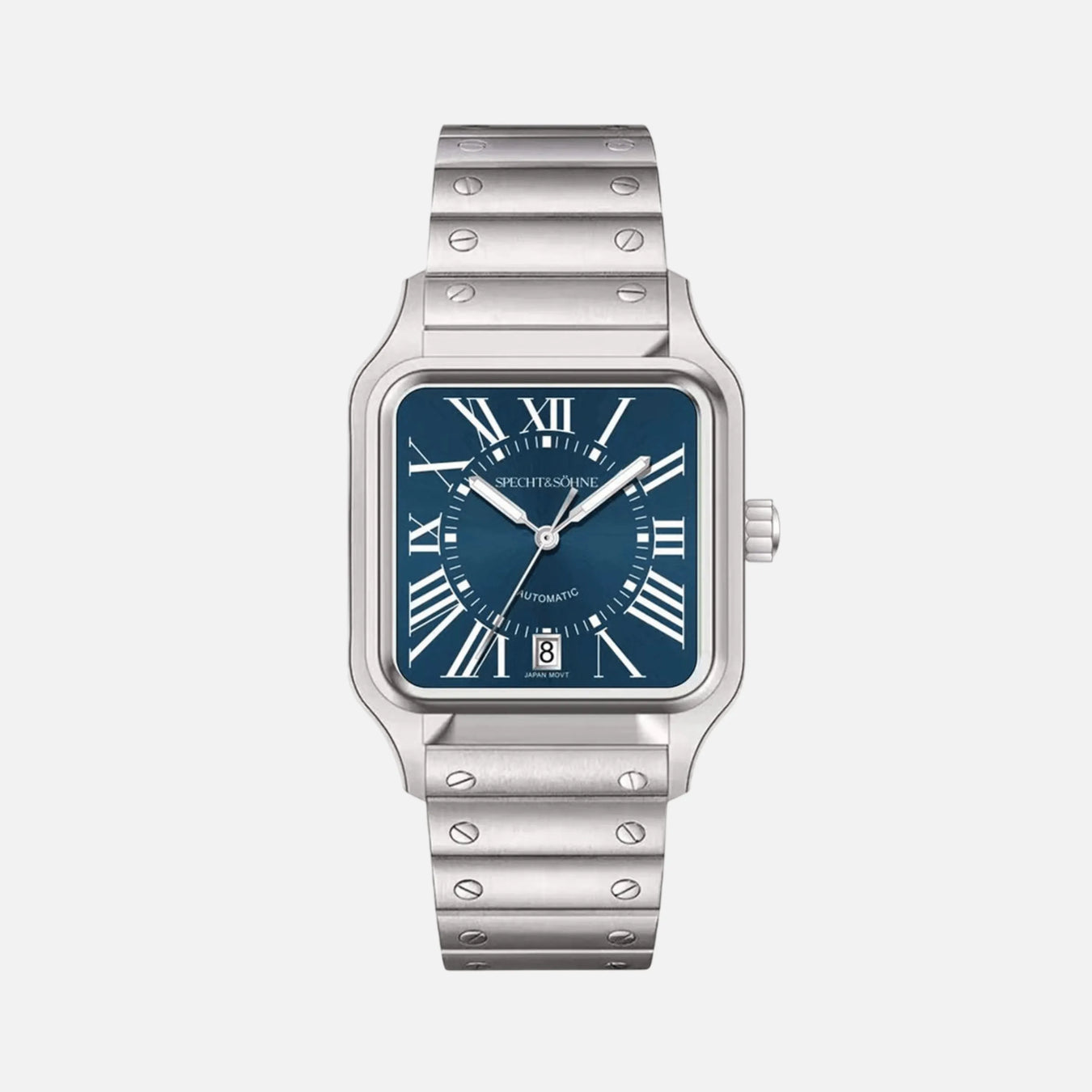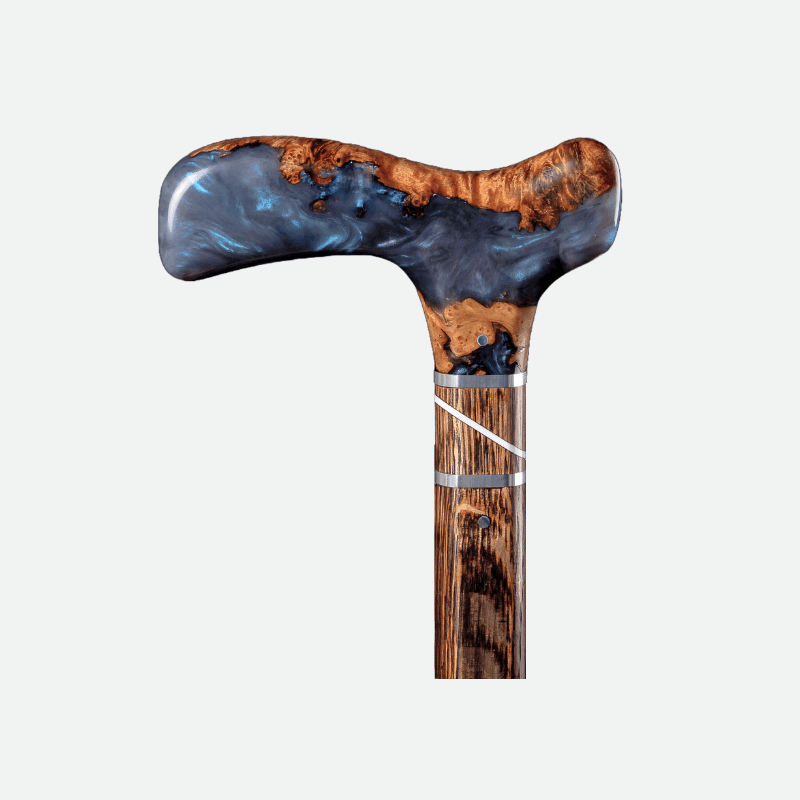
Mastering the Board: A Visual Guide to Chess Openings
Introduction to Chess Openings: The Gateway to Strategic Play
Chess is not merely a game of chance; it is a game of skill, strategy, and complex decision-making where every move can be critical to the outcome. The opening phase of a chess game, the sequence of initial moves, lays the foundation for the intricate play that follows. Understanding and mastering these openings is essential for any player seeking to improve their gameplay.
Imagine each chess opening as a unique conversation between opponents. Numerous possibilities unfold on the 64-square battlefield, ranging from subtle positioning to aggressive assaults. Acquiring familiarity with various openings and their subsequent variations is akin to learning a new language—the language of chess strategy.
For a player armed with a set of large wooden chess pieces, each piece’s initial deployment signals the start of a carefully-constructed plan. Luxury chess pieces glide across the board as visual tactics materialize, showing that the art of chess is as much about physical beauty as it is about mental acuity. A gift for dad—or any chess enthusiast—could well be an elegant set of beautiful chess pieces, inspiring an appreciation for the depth of the game.
In the hands of dedicated players, even the smallest pawn becomes a powerful tool within the broader scope of chess openings. Skilled players know their openings well, laying out a complex web of potential moves and counter-moves, leveraging both the aesthetics and the tactics embedded in each decision.
Whether you’re a novice learning to navigate opening theory or an experienced player honing your strategy, a profound understanding of chess openings can open doors to a nuanced and strategic play. This is where the game’s most compelling plans are conjured, and for many, where the love for chess takes root.
Understanding the Importance of Opening Principles
In the strategic battle that commences with each game of chess, the successful deployment of opening principles is crucial. To begin, one must appreciate that chess is not merely a test of tactical acumen but a war of positioning and foresight. An opening lays the groundwork for the middlegame and can even echo into the endgame. Proficiency here ensures that the pieces reach their optimal potential early on, effectively shaping the battle to come.
The opening is akin to setting the stage. Imagine a set of large wooden chess pieces, each with a unique role. These luxury chess pieces are not just for show; they are combatants in an intricate dance. The opening principles guide their performance, ensuring they work in concert to control the center, develop swiftly, and safeguard the king. Abiding by these principles implies that each move is purposeful, coordinating the beautiful chess pieces like an orchestra follows the conductor’s baton.
- Control the Center: Central domination facilitates movement of all pieces, providing power and flexibility.
- Develop Efficiently: Underdeveloped pieces are akin to untapped resources; develop them early to unlock their potential.
- King Safety: The king is both a vulnerable asset and a potential endgame weapon. Securing it early on avoids disasters.
- Minimize Mistakes: A significant part of opening theory is avoiding common pitfalls that can lead to rapid defeat.
Chess openings are not just about memorizing moves but understanding the principles that underpin them. Integrating these principles into one’s play is vital for creating a position of strength and thwarting the opponent’s strategies. The opening is the gift for dad that keeps on giving – a well-executed start translates to advantages that can be capitalized on as the game progresses. The pursuit of mastering the board begins with a deep respect for the opening principles, for they are the first step towards outmaneuvering the opponent in the timeless ballet of chess.
Exploring the E4 Openings: Key Lines and Variations
The e4 opening stands as one of the bastions of chess strategy, offering a plethora of key lines and variations for both novices and grandmasters alike. When initiating a game with 1.e4, players unveil a landscape teeming with tactical and positional opportunities.
The Ruy Lopez
- Main Line (3…a6): White seeks to maintain a strong center while pressuring the black knight on c6.
- Marshall Attack (3…a6 4.Ba4 Nf6 5.O-O Be7 6.Re1 b5 7.Bb3 d5): An aggressive counter from Black that challenges White to defend precisely or face dire consequences.
The Sicilian Defense
- Open Variations (1.e4 c5 2.Nf3 d6): Black immediately fights for central control, leading to unbalanced positions.
- Dragon Variation (1.e4 c5 2.Nf3 d6 3.d4 cxd4 4.Nxd4 Nf6 5.Nc3 g6): Black aims for control of the long diagonal with the g7-bishop, counterattacking chances are rife.
The French Defense
- Tarrasch Variation (1.e4 e6 2.d4 d5 3.Nd2): White avoids the pin of the knight with 3.Nc3, allowing for flexible pawn play.
- Winawer Variation (1.e4 e6 2.d4 d5 3.Nc3 Bb4): Sharp positions arise where both players must navigate a minefield of tactical shots.
The Caro-Kann Defense
- Classical Variation (1.e4 c6 2.d4 d5 3.Nc3 dxe4 4.Nxe4 Bf5): Black seeks solid development and a strong structure.
- Advance Variation (1.e4 c6 2.d4 d5 3.e5): White gains space in the center, challenging Black to undermine this pawn chain.
Each of these openings has a rich tapestry of sub-variations and intricate ideas, providing players with a set of wooden chess pieces art 809125 - an artful and complex tableau on the 64-square battlefield. For those desiring luxurious aesthetics or seeking a meaningful gift for a chess enthusiast father, a set of large wooden chess pieces or luxury chess pieces enriches the experience immeasurably. The sheer beauty of chess pieces doubles as both a visual treat and a mental challenge, making it an ideal beautiful chess pieces gift for dad.
Delving into the D4 Openings: Understanding the Queen’s Gambit and Beyond
The game of chess is as aesthetic as it is intellectual, a sentiment reflected in the array of beautiful chess pieces, such as those found in luxury sets, that one might encounter over the board. When the conversation veers into chess openings, especially those initiated with the move 1.d4, the Queen’s Gambit undoubtedly takes center stage. As one of the oldest and most trusted openings in chess, the complexity and elegance of the Queen’s Gambit are akin to the craftsmanship found in a set of large wooden chess pieces.
The Queen’s Gambit is defined by the moves:
- d4 d5
- c4
This opening aims to exert pressure on the central d5 square while setting the stage for dominance in the center of the board. The gambit is classified into two main categories: the Queen’s Gambit Accepted (QGA) and the Queen’s Gambit Declined (QGD). The QGA sees Black accepting the ‘gift’ of the pawn on c4, while the QGD finds Black fortifying their center, often with moves like e6 and c6.
Beyond the Queen’s Gambit, there is a diverse repertoire accessible to any player who elects to move their d-pawn two squares forward on the first turn. These include the King’s Indian Defence, the Nimzo-Indian Defence, and the Grünfeld Defence, each offering dynamic and rich possibilities for counterplay.
A visual guide to these openings would not only detail key moves but also the strategic ideas behind them, much like a well-thought-out gift for dad, that conveys a deeper meaning with its presentation. The guide would demonstrate, with illustrative positions, how control of the center, piece development, and king safety are of paramount importance in the game’s early stages. Mastery of the d4 openings can be considered a rite of passage for the serious chess enthusiast, much like the acquisition of a set of wooden chess pieces art 809125 represents for the aficionado of chess culture.
The Nf3 Openings: A Path to Positional Understanding
When one explores the world of chess openings, the Nf3 move – also known as the Reti Opening – stands out for its finesse and subtlety. This is a solid opening that provides the basis for a deep positional understanding of the game. By deploying one of the knights early, players demonstrate their intent to control the central squares and prepare for a diversified game plan.
Players opting for the Nf3 opening are often looking to direct the game into quieter waters where strategic understanding and maneuvering reign supreme. This opening diverges from the more well-trodden paths of the e4 and d4 openings, which often lead to theoretical slugfests. Instead, Nf3 aims at flexibility, keeping options open and allowing players to adapt as the game unfolds.
The following are critical aspects to consider when exploring the Nf3 openings:
- Control of the Center: The knight on f3 influences the central squares, e5 and d4, laying the groundwork for further development.
- Flexibility: With the Nf3 opening, players maintain flexibility in pawn structure and are not committed to any specific configuration too early.
- King Safety: Often, this opening leads to a game where the kings are securely castled, and the battle is focused on minor piece activity and pawn structure.
- Strategic Battles: Games stemming from the Nf3 opening are likely to involve knight maneuvers, pawn breaks, and bishops eyeing long diagonals.
Particularly for those who cherish a set of wooden chess pieces for their tactile pleasure and visual appeal, the Nf3 openings complement this experience by emphasizing thoughtful, aesthetic play. Manufacturers such as those who artfully create a set of large wooden chess pieces, luxury chess pieces, or beautiful chess pieces often cater to connoisseurs who appreciate the elegance and cerebral nature of the game – qualities mirrored in the Nf3 opening strategies.
Chess enthusiasts seeking a beautiful gift for dad or a frame for developmental improvement might consider pairing a luxury chess set with the study of the Nf3 opening. It’s more than a game – it’s an art form where mental prowess meets the tactile and visual grace of masterfully carved chess pieces.
The Unorthodox Openings: When Creativity Meets the Board
In the world of chess, where strategy reigns supreme, unorthodox openings have carved a niche where creativity disrupts the traditional narrative. Every chess enthusiast, from the novice armed with a set of wooden chess pieces art 809125 to the grandmaster, recognizes the impact of a well-played opening. These unconventional gambits embody a brazen spirit unwilling to adhere to classical doctrines, often leaving opponents flustered.
The Grob Attack (1. g4): A divisive move that breaks all conventional wisdom by pushing a wing pawn; it stupefies opponents and can lead to quick victories or disastrous losses.
The Bird’s Opening (1. f4): Not as radical as the Grob, but still offbeat with intentions to control the e5 square, often transposing into the revered Dutch Defense.
The Orangutan/Sokolsky Opening (1. b4): Named whimsically, it lures contenders into unfamiliar territory, expanding on the queen’s flank while eying the center.
The Halloween Gambit (1. e4 e5 2. Nf3 Nc6 3. Nc3 Nf6 4. Nxe5?!): A move so brazen it could be considered a trick, sacrificing a knight early for aggressive play.
Immersing in these audacious tactics requires more than just a set of large wooden chess pieces; luxury chess pieces may inspire the player, but a bold heart and a keen mind conquer the squares. Each unorthodox opening is akin to a beautiful chess piece: gift for dad, mentor, or oneself, celebrating the rich diversity and creative potential inherent in every game of chess.
Adventurous players harness these openers as psychological tools, disrupting the rhythm and comfort of their adversaries. While they may not always lead to victory, they cultivate a style that embraces dynamism and innovation, encouraging players to take risks and think originally. As artistry meets competition, the unorthodox openings demonstrate that chess is not merely a battle of minds but a canvas for creativity.
Visual Patterns in Chess Openings: Recognizing Common Structures
In the complex world of chess, players constantly seek advantages through the strategic deployment of a set of beautifully crafted wooden chess pieces. At the heart of this quest are the openings, where recognizing visual patterns can pave the way to success. It’s like an intricate dance between luxury chess pieces, each step deliberate, setting the tempo for the match.
A common structure that often takes form is the pawn’s double central formation, seen in openings like the traditional King’s Pawn game. Here, pawns on d4 and e4 for White, or d5 and e5 for Black, control the center and exemplify an opening’s territorial ambition. Players learn to spot this pattern early, understanding that it can lead to a dynamically poised middlegame.
Flanking this central control are the knights, typically jumping to f3 and c3 for White or f6 and c6 for Black, movements worthy of the most exquisite large wooden chess pieces. This ‘knights before bishops’ guideline aids players in recognizing how the development of each piece contributes to overall formidable structures.
Some openings lead to the iconic ‘pawn chain,’ a series of diagonally connected pawns, pointing like an arrow towards the opponent’s position. A common sighting in the French Defence or the Caro-Kann, these chains dictate the flow of the game, suggesting areas of potential breakthroughs or key squares to control.
For a gift for dad who loves chess or any budding enthusiast, comprehending these visual patterns offers more than aesthetic pleasure. It serves as foundational knowledge, guiding decisions and helping craft a game as stunning as the luxury chess pieces that traverse the board. Chess becomes a visual art where each move adds to an evolving picture of attack and defense, pattern recognition being the artist’s tool in flourishing the game’s boundless canvas.
Developing a Repertoire: How to Choose the Right Openings for Your Style
Choosing the proper chess openings that harmonize with one’s style is a critical component in developing a personal repertoire. This process involves a thorough understanding of one’s strengths, weaknesses, and the strategic and tactical patterns they are most comfortable with. Whether one opts for a set of wooden chess pieces art 809125 or a set of large wooden chess pieces, the fundamentals of selecting the right openings remain unchanged.
When embarking on this journey, players should consider several factors:
Personal Style: Is the player aggressive, preferring complex, tactical skirmishes, or more conservative, favoring a solid, strategic approach? The selection of chess openings should reflect these preferences to allow a player to lead the game into familiar territory.
Versatility: A balanced opening repertoire includes positions that can adapt to various opponents. Luxury chess pieces are not just for show; much like these beautifully crafted pieces, each opening should serve both aesthetic and practical purposes.
Preparation Time: Some openings require considerable study and understanding. Considering the amount of time one is willing to invest in preparation can guide the choice between mainstream and more offbeat openings.
Opponent’s Style: Anticipating the types of openings and positions opponents might favor can influence one’s choices. A ‘gift for dad’ approach treats the game with a mix of respect and strategic joy, aiming to counter the opponent’s strengths.
Starting with fundamental openings, such as the Ruy Lopez for 1.e4 players or the Queen’s Gambit for 1.d4 players, and branching out as expertise grows, can be a good strategy. Importantly, each opening chosen should contribute to a collection that feels as personal and effective as a set of beautiful chess pieces tailored for a specific player.
Opening Traps and Tactics: Navigating Early Pitfalls
In the realm of chess, the opening gambits are where the battle lines are first drawn, and subtle maneuvers can lay the foundations for victory or spell early disaster. Whether playing with a set of large wooden chess pieces or standard tournament pieces, the principles of avoiding opening traps remain constant. Enthusiasts know that owning luxury chess pieces adds aesthetic value to the game, but the real mastery lies in understanding the tactics that can secure an advantage or escape snares laid by the opponent.
One must first be aware of well-known traps, such as the Scholar’s Mate, which targets a checkmate in just four moves. While easily avoidable with cautious play, it exemplifies how a beautiful chess set can quickly become a scene of defeat if one is not vigilant. A gift for dad or a loved one often includes a chess set, and imparting knowledge of these early traps can be just as valuable.
Early pitfalls in chess openings are often associated with quick material gain, enticing the unwary player to snatch a pawn or piece, disregarding the broader positional consequences. Such actions can lead to disastrous king-side attacks or dominance in the center by the opponent. Players must balance the temptation to win pieces against the long-term strategic position.
To navigate these early traps, a player should:
- Develop pieces efficiently, ensuring control of the board’s center.
- Remain alert for patterns that signal common traps.
- Focus on king safety, avoiding unnecessary early exposés.
- Reserve pawns’ movements for essential structural changes and to facilitate piece development.
Remember, with a set of wooden chess pieces art 809125 in hand, players should prioritize solid strategies over quick, deceptive gains. Fortune favors the thoughtful player, not just the holder of the most aesthetically pleasing set.
Mastering the Transition: From Opening to Middlegame
The transition from opening to middlegame in chess is a critical juncture where careful evaluation and strategic planning become paramount. As players move beyond the opening, the board’s character begins to take form, and understanding the intricacies of this transition can make the difference between victory and defeat.
Crafting a successful transition involves several key steps. Firstly, a player should fully assess the position, noting pawn structures, piece activity, and potential threats or weaknesses. This evaluation forms the bedrock upon which middlegame strategies are built. One must avoid tunnel vision, ensuring that both attack and defense are considered.
Secondly, development must continue seamlessly; undeveloped pieces are akin to unutilized resources. Players must aim to harmonize their pieces, coordinating them towards a common goal. Moving a set of wooden chess pieces with precision and intent is part of the grander narrative of the game.
The transition also often involves king safety considerations. Deciding whether to castling early or delay for tactical reasons is a complex choice that must be tailored to the specific position on the board.
Lastly, the overarching plans formulated in the opening should now be revisited and revised if necessary. A beautiful chess piece might be poised for a powerful attack or serve as a gift for dad in a friendly home game, but in competitive play, every move must serve the larger strategy.
In conclusion, the middlegame battlefield is where a player’s foresight, a set of large wooden chess pieces, luxury chess pieces, and even the humblest pawns come to life. The player’s ability to master this transition is often what distinguishes the novices from the seasoned tacticians.
Analyzing Famous Opening Sequences: Learning from the Masters
In the venerable realm of chess, the opening serves as the foundation upon which every ensuing strategy is built. For both neophytes and seasoned players, understanding the intricacies of famous openings through the lens of grandmasters is invaluable.
Consider the Ruy Lopez, initiated with 1. e4 e5 2. Nf3 Nc6 3. Bb5. This sequence, artfully crafted in the 16th century, remains a testament to strategic depth. Studying the grandmasters’ application reveals an intricate balancing act: the white pieces systematically apply pressure, while black seeks counterplay—an elegant dance engaged upon the battlefield of a chessboard.
The Sicilian Defense, another cornerstone of chess strategy, is a divergence from the tranquil symmetry of double king-pawn openings. Executed through 1. e4 c5, it is renowned for providing dynamic counterattacking prospects to black. The beholder of such a strategy learns much about asymmetric pawn structures and the significance of piece activity from the moves made by legends like Bobby Fischer and Garry Kasparov.
One must also examine the Queen’s Gambit, initiated with 1. d4 d5 2. c4. This gambit is a lesson in positional understanding as it challenges players to maintain a central foothold or to embrace a subtle sequence of pawn exchanges. Dissecting historical matches unveils the philosophical divide between pure materialism and positional compensation.
Within each move and countermove of these openings lies a narrative. Whether employing a set of wooden chess pieces artfully arrayed on the board, or a set of large wooden chess pieces that add a touch of tactile beauty to the game, each chess piece, from the sturdy pawns to the elegant queen, becomes a character in an unfolding drama.
A luxury chess set, often chosen for its beautiful chess pieces, can turn an ordinary game into a splendid spectacle—becoming not just a game, but a form of art. As a gift for dad or a cherished mentor, it symbolizes a rite of passage, an invitation to dissect the plays of chess titans and to embark upon one’s odyssey across the checkered squares.
Practical Tips for Improving Your Opening Play
Incorporating practical strategies into your opening play can transform your chess game, especially when honing your skills with a set of wooden chess pieces art 809125. The tactile nature of large wooden chess pieces can also enhance the physical experience of planning and executing strategies.
- Learn the Fundamentals: Master the basic principles of opening play, which include controlling the center, developing your pieces, and ensuring the safety of your king.
- Study Opening Theories: Acquire knowledge of opening theories, but focus on understanding the ideas behind the moves rather than memorizing sequences.
- Practice with Purpose: Utilize your beautiful chess pieces by playing regular games, and focus on applying the opening principles rather than just winning.
- Analyze Grandmaster Games: Review games played by grandmasters, looking at their opening choices and the plans that follow. This helps in recognizing patterns and understanding high-level strategies.
- Create an Opening Repertoire: Build a repertoire of openings that suits your style of play. This allows you to become more familiar and efficient with specific positions.
- Use Chess Software: Employ chess software to study your openings. Advanced software can provide you with a deeper understanding by analyzing billions of games and giving you feedback on your play.
- Learn from Mistakes: After each game, analyze where you might have gone wrong in the opening. Learning from these mistakes is crucial to improving your play.
- Stay Updated: Openings evolve, and new lines are introduced frequently. Stay current by following recent games and trends.
A luxury chess set can double as a splendid gift for dad and a tool for improving your chess openings. Engaging with a visually appealing and high-quality set might increase your motivation to practice consistently, turning the chessboard into a battleground where masterful opening strategies are both developed and executed.
Using Chess Software and Databases to Enhance Opening Mastery
In the quest for opening supremacy, both novice players and seasoned grandmasters turn to chess software and extensive databases as indispensable tools. These digital companions serve to dissect a plethora of opening variations, providing access to a virtual treasure trove of historic games and theoretical developments.
For players desiring to refine their opening repertoire, software such as ChessBase and Houdini offers robust analysis features. These programs allow you to input any given position and explore countless continuations, shedding light on the intricacies of opening theory with unparalleled precision. Their powerful engines can evaluate positions, suggest improvements, and highlight potential pitfalls.
Moreover, utilizing a comprehensive database is akin to having an encyclopedic command of chess openings. Databases compile millions of games, ranging from local club skirmishes to world championship battles. They provide statistics on move popularity and success rates, guiding players toward sound strategic choices. By studying patterns in a set of wooden chess pieces artfully arranged in historical matches or emulating the maneuvers from a set of large wooden chess pieces wielded by masters, one can discern the trends and tactics that resonate with individual playing style.
Discerning players often cozy up with luxury chess pieces, transforming their analytical sessions into a sensory delight. Gifted with a beautiful chess set or a cherished gift for dad, enthusiasts deepen their engagement with the game, appreciating its aesthetic in addition to its competitive facets.
In summary, chess software and databases not only simplify the acquisition of opening knowledge but also amplify one’s ability to scrutinize and adopt winning strategies. The synthesis of technology and traditional study methods propels players toward mastery of the 64-square battlefield.
Common Mistakes in Chess Openings and How to Avoid Them
In the intricate dance of chess openings, a single misstep can disrupt the harmony of the game. The onset is a battle of wits and strategy where players deploy their beautiful chess pieces, much like an opening act in a grand performance. Beginners and even intermediate players often find themselves making common errors during this phase. Understanding these pitfalls is essential to mastering the game with a set of wooden chess pieces art 809125.
- Neglecting Central Control: The center of the board is a key battleground in chess. One should aim to utilize their large wooden chess pieces to control these central squares, allowing for greater mobility of pieces and more tactical opportunities.
- Developing Pieces Illogically: Bringing out your luxury chess pieces without a plan can backfire. Each move should serve a specific purpose, be it control, attack, or defense. Ensure that the development of pieces helps in maintaining a strong position.
- Ignoring King Safety: Castling too late or not at all can leave your king vulnerable. Prioritize securing your monarch early on to avoid sudden attacks.
- Moving the Same Piece Repeatedly: This can waste precious time during the opening. Aim for efficient development by moving each piece once until the necessity for a tactical sequence arises.
- Failing to Maintain a Sound Pawn Structure: Pawns are the soul of chess. Avoid making unnecessary pawn moves that could create weaknesses such as isolated or doubled pawns.
- Overlooking En Prise Pieces: Ensure that each move leaves your pieces or your opponent’s pieces defended or that their capture would result in an advantageous trade.
To sidestep these common opening errors, one should study classical opening patterns and principles, such as controlling the center, developing pieces effectively, and ensuring king safety. Careful observation of these principles while admiring the craftsmanship of a gift for dad— a set of wooden chess pieces— can enhance both the aesthetic and strategic experience of the game.
The Future of Chess Openings: Trends and Evolving Strategies
Chess, a timeless game with a rich history spanning centuries, continues to undergo evolution, particularly in the domain of openings. As artificial intelligence and machine learning become intertwined with the sport, enthusiasts might notice a shift toward a more data-driven approach in strategizing openings. The integration of high-level analysis tools predicts a future where unconventional openings may gain popularity among high-ranking players.
Players are leaning towards dynamic openings with understanding that positions may not always align with traditional principles. The vocabulary of chess, once dominated by a set of wooden chess pieces art 809125 meticulously moving across the board, is now also about computing probabilities and measuring outcomes against large databases of past games.
In the competitive landscape, the allure of large wooden chess pieces may give way to the precision of digital analysis. Luxury chess pieces and beautiful chess sets remain as desirable items like a gift for dad, yet they also represent the history and cultural significance of chess which underpins these evolving strategies.
The trends suggest a growing emphasis on flexibility and adaptability in openings. Players are encouraged to reassess early moves and adapt quickly to opponents’ strategies. The future may see a decrease in the reliance on rote memorization and an uptick in emphasis on understanding the underlying principles at a deeper level.
This evolution naturally leads to an overarching question: How will classic opening theories stand up against the test of emerging trends? The future of chess openings is poised at a crossroads of tradition and innovation, where pattern recognition meets creative problem-solving, setting the stage for a new era in chess strategy.
Conclusion: Consolidating Your Opening Knowledge for On-Board Success
In the intricate dance of chess, each move constructs the foundation for your strategic advantage or demise. To truly master the board, a player must weave a tapestry of tactics and foresight, beginning with the opening gambits. With a set of wooden chess pieces artfully arrayed, one must remember that each figure is a key tool in the battle for control.
Enthusiasts equipped with a set of large wooden chess pieces understand that the aesthetic pleasure derived from luxury chess pieces only enhances the cerebral joy of the game. Beginners or those presenting a beautiful chess piece gift for dad must note that beyond the grandeur, lies the crux of inside knowledge—knowledge that steels one for the complex endgame.
Here are steps to ensure this knowledge is consolidated:
Analyse Classic Games: Study the historic and modern chess games to understand why certain openings are preferred. Learn the patterns that have led to victory or defeat.
Practice with Purpose: Drill the openings that complement your play style. Use your beautiful chess pieces to recreate scenarios and apply different strategies against various defenses.
Memorize Key Moves: Understanding the opening principles isn’t sufficient. Memorize the critical moves and their counter-moves to navigate the opening phase confidently.
Adaptation Skills: No game is the same. Develop the ability to adapt your opening knowledge to unforeseen positions or strategies your opponent may present.
Regular Review and Update: Chess theories evolve. Regularly review your opening repertoire and keep abreast of the latest developments in opening theory.
Let the sheen of luxury chess pieces remind players that the game’s complexity is matched by its elegance. The path to on-board success is a journey of continuous learning, strategic practice, and tactical agility. With the poise of a grandmaster, any player can transform the battlefield, ensuring that their set of beautiful chess pieces does not merely lie in defeat but stands tall in triumphant formation.






